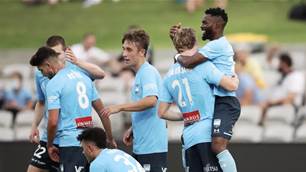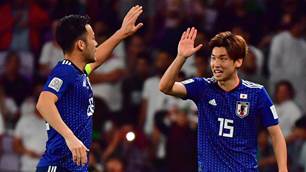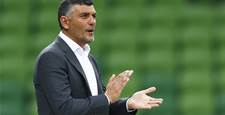“The dream is dead,” read the headlines. “Australia fails to qualify for France 98”.
Second half goals by Iran veterans Karim Bagheri and Khodadad Azizi put the visitors through to the World Cup for the first time in 20 years at the expense of our boys.
The remnants of that phenomenal football match remain deeply embedded within the memories of both nations. At last, the relationship has a chance to embark on a new phase: a possible meeting in the semi-finals of the upcoming Asian Cup.
But that’s getting ahead of ourselves. More pressing is the fact Iran, dogged by administration problems, almost didn’t make the tournament, despite breezing through their qualification group.
The reasons are anything but simple. In Iran, the Physical Education Organisation (PEO) administers all sporting activity. After Iran’s poor performance in the 2006 World Cup the head of the PEO, appointed by Iran’s President, sacked the elected head of the Iranian Football Federation (IFF) effectively breaking FIFA’s golden rule: no government interference.
FIFA’s calls for an immediate re-instatement were ignored. Finally in November, FIFA threw down the gauntlet and suspended the IFF from all international activity, including the upcoming Asian Cup. The decision came only one week after Iran defeated South Korea in an Asian Cup qualifier that had cemented its place in this year’s finals.
Fortunately, the ban was lifted after a month of negotiations but Iran received a stern warning from FIFA: “They have to abide by international rules or they can play on their own,” declared FIFA president Sepp Blatter.
Since then, the storm that rocked the boat has slightly eased but has by no means blown itself out. Adding to the spate of changes, a newly appointed head coach, Amir Ghalenoei, took over after the four year reign of Branko Ivankovic. Ghalenoei, also head coach of Iran’s Pro League (IPL) champions, Esteghlal, promised swift action and a move away from Ivankovic’s much criticised conservative tactics.
But Ghalenoei himself has faced criticism from Iranian fans and analysts for his lack of preparation leading up to the Asian Cup and his similarities to Ivankovic’s style. Iran has only competed in one friendly against Qatar in March and scheduled a re-match in June. Only recently were plans for a friendly with Mexico announced.
Despite the criticisms, Ghalenoei has pulled Iran through a tumultuous eight months. He has experimented with uncapped players during the qualifiers to explore a mix of new talents and as a coach has the strength to limit team in-fighting, which was rife during the World Cup.
In a recent media briefing he unveiled some of his team’s tactical plans for the Asian Cup. Turning back to its traditional defensive game, Iran will concentrate on transferring defence into attack and will most likely use the 3-5-2 or 4-4-2 formation. “My primary belief is that our team should not concede goals. I play with three central defenders with one being the covering defender,” Ghalenoei told news agency, ISNA.
The heart of Ghalenoei’s team lies within his bullet-proof midfield: Ali Reza Vahedi-Nikbakht, Javad Nekounam and Andranik Teymourian provide the defensive cover, while team captain Mehdi Mahdavikia and Ali Karimi are free to get into more advanced positions alongside the strikers.
Bayern Munich’s Karimi will be Iran’s most marked player throughout the tournament. Nick-named the “Asian Maradona”, his dribbling and technical skills had him on his way to becoming Iran’s – and possibly Asia’s – best ever player. But after a poor performance in the World Cup, due to a prior ankle injury, Karimi has failed to live up to expectations. However, he might just have a trick or two up his sleeve and surprise a few people come July.
A rising star is current Bolton Wanderers midfielder, Andranik Teymourian. Only the second ever Iranian to play in the English Premier League, he recently scored two goals against Wigan and was labelled Man of the Match by The Sunday Telegraph in the 2-2 draw against Chelsea. Former Bolton head coach Sam Allardyce described him as: “One of the fittest lads I’ve seen. He has got a terrific engine and a really good ability in terms of not just passing but popping up in the box at the right time.”
Iran will enter its eleventh Asian Cup tournament hell-bent on surpassing its 2004 third place and justify its position as Asia’s top-placed team in the FIFA rankings. After topping its qualification group, they were handed a comfortable first-round tournament draw against Malaysia, Uzbekistan and China.
Iran should reach the quarter-finals without trouble to face one of two probable candidates from Group D – South Korea or Saudi Arabia. Korea’s loss of star winger Park Ji-Sung will boost Iran’s confidence but Saudi Arabia might prove more difficult. “We’re glad we managed to avoid Saudi Arabia in the opening round as they would be very tough opponents,” said former striker and Asian Player of the Year, Khodadad Azizi.
Getting through a sticky quarter-final could set up a long awaited Asian thriller between Iran and Australia and with the two nations side by side in the FIFA rankings, the wheels have been set-in-motion for a vigorous and ongoing Asian rivalry.
FourFourTwo verdict
Anything less than the semis would be
a failure for one of the Cup favourites.
The remnants of that phenomenal football match remain deeply embedded within the memories of both nations. At last, the relationship has a chance to embark on a new phase: a possible meeting in the semi-finals of the upcoming Asian Cup.
But that’s getting ahead of ourselves. More pressing is the fact Iran, dogged by administration problems, almost didn’t make the tournament, despite breezing through their qualification group.
The reasons are anything but simple. In Iran, the Physical Education Organisation (PEO) administers all sporting activity. After Iran’s poor performance in the 2006 World Cup the head of the PEO, appointed by Iran’s President, sacked the elected head of the Iranian Football Federation (IFF) effectively breaking FIFA’s golden rule: no government interference.
FIFA’s calls for an immediate re-instatement were ignored. Finally in November, FIFA threw down the gauntlet and suspended the IFF from all international activity, including the upcoming Asian Cup. The decision came only one week after Iran defeated South Korea in an Asian Cup qualifier that had cemented its place in this year’s finals.
Fortunately, the ban was lifted after a month of negotiations but Iran received a stern warning from FIFA: “They have to abide by international rules or they can play on their own,” declared FIFA president Sepp Blatter.
Since then, the storm that rocked the boat has slightly eased but has by no means blown itself out. Adding to the spate of changes, a newly appointed head coach, Amir Ghalenoei, took over after the four year reign of Branko Ivankovic. Ghalenoei, also head coach of Iran’s Pro League (IPL) champions, Esteghlal, promised swift action and a move away from Ivankovic’s much criticised conservative tactics.
But Ghalenoei himself has faced criticism from Iranian fans and analysts for his lack of preparation leading up to the Asian Cup and his similarities to Ivankovic’s style. Iran has only competed in one friendly against Qatar in March and scheduled a re-match in June. Only recently were plans for a friendly with Mexico announced.
Despite the criticisms, Ghalenoei has pulled Iran through a tumultuous eight months. He has experimented with uncapped players during the qualifiers to explore a mix of new talents and as a coach has the strength to limit team in-fighting, which was rife during the World Cup.
In a recent media briefing he unveiled some of his team’s tactical plans for the Asian Cup. Turning back to its traditional defensive game, Iran will concentrate on transferring defence into attack and will most likely use the 3-5-2 or 4-4-2 formation. “My primary belief is that our team should not concede goals. I play with three central defenders with one being the covering defender,” Ghalenoei told news agency, ISNA.
The heart of Ghalenoei’s team lies within his bullet-proof midfield: Ali Reza Vahedi-Nikbakht, Javad Nekounam and Andranik Teymourian provide the defensive cover, while team captain Mehdi Mahdavikia and Ali Karimi are free to get into more advanced positions alongside the strikers.
Bayern Munich’s Karimi will be Iran’s most marked player throughout the tournament. Nick-named the “Asian Maradona”, his dribbling and technical skills had him on his way to becoming Iran’s – and possibly Asia’s – best ever player. But after a poor performance in the World Cup, due to a prior ankle injury, Karimi has failed to live up to expectations. However, he might just have a trick or two up his sleeve and surprise a few people come July.
A rising star is current Bolton Wanderers midfielder, Andranik Teymourian. Only the second ever Iranian to play in the English Premier League, he recently scored two goals against Wigan and was labelled Man of the Match by The Sunday Telegraph in the 2-2 draw against Chelsea. Former Bolton head coach Sam Allardyce described him as: “One of the fittest lads I’ve seen. He has got a terrific engine and a really good ability in terms of not just passing but popping up in the box at the right time.”
Iran will enter its eleventh Asian Cup tournament hell-bent on surpassing its 2004 third place and justify its position as Asia’s top-placed team in the FIFA rankings. After topping its qualification group, they were handed a comfortable first-round tournament draw against Malaysia, Uzbekistan and China.
Iran should reach the quarter-finals without trouble to face one of two probable candidates from Group D – South Korea or Saudi Arabia. Korea’s loss of star winger Park Ji-Sung will boost Iran’s confidence but Saudi Arabia might prove more difficult. “We’re glad we managed to avoid Saudi Arabia in the opening round as they would be very tough opponents,” said former striker and Asian Player of the Year, Khodadad Azizi.
Getting through a sticky quarter-final could set up a long awaited Asian thriller between Iran and Australia and with the two nations side by side in the FIFA rankings, the wheels have been set-in-motion for a vigorous and ongoing Asian rivalry.
FourFourTwo verdict
Anything less than the semis would be
a failure for one of the Cup favourites.
Related Articles

A-League striker heads to Iran

Is the A-League now taking Asia seriously?














